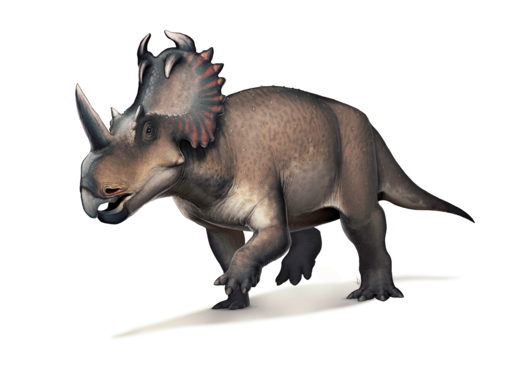The Horned Herbivore
Centrosaurus was a fascinating dinosaur that roamed the Earth during the Late Cretaceous period, about 76 to 75 million years ago.

| Meaning | Pointed lizard [Centro-saurus] |
| Pronunciation | SEN-troh-SORE-us |
| When: | Late Cretaceous (about 76–75 million years ago) |
| Where: | North America (Canada, Alberta) |
| What: | Ceratopsian (herbivorous) |
| Weight: | Estimated around 2–3 metric tons |
| Length: | Approximately 6 meters (20 feet) |
| Diet: | Herbivorous (ate cycads, ferns, and other vegetation) |
| Discovered: | First described by Lawrence Lambe in 1904 |
This large, herbivorous dinosaur is part of the ceratopsid family, known for their distinctive horns and frills.
Fossils of Centrosaurus have been primarily discovered in what is now Alberta, Canada.
Centrosaurus was around 6 meters (20 feet) long and weighed about 2-3 tons.
It had a prominent single horn on its nose and a pair of smaller horns above its eyes, along with a large bony frill extending from the back of its head. This frill was decorated with small hornlets, making it look even more formidable.
Centrosaurus lived in herds, which provided safety in numbers against predators like the tyrannosaurs of its time. The discovery of large bonebeds containing numerous Centrosaurus individuals suggests that these dinosaurs experienced mass mortality events, possibly due to natural disasters such as floods.
The distinct horns and frills of Centrosaurus were likely used for defense, display, and possibly in social interactions within their herds.
